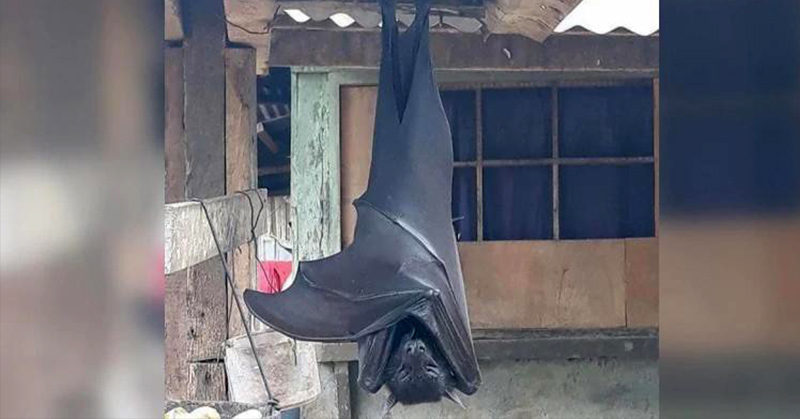By now I’m sure we’ve all seen the viral photo of that ‘human-sized bat’ in the Philippines. Most of us probably had the same thought: There’s no way giant bats like that are real!
Like it or not, giant bats are real, but they aren’t quite what that viral post says they are. This is everything you need to know about these so-called ‘human-sized bats’ around the world.
Giant Bats: Not As Giant As You Think They Are
Twitter user AlexJoestar622 shared a photo that was originally posted on Reddit a couple of years ago of a “human-sized” bat in the Philippines. In the photo (see below), the bat appears to be the size of a person. In reality, they aren’t quite as the photo seems. (1)
Giant bats, which are also called Flying Foxes or the Fox Bat, are a family of 65 different species of giant bats that live on tropical islands, from Australia to Madagascar, Indonesia, the Philipines, and many parts of mainland Asia. They are most definitely the largest of the bat species but are by no means the size of a person. (1, 2)
Their wingspan can reach up to 5 feet wide (1.5 m), but their actual bodies aren’t that big. From head to toe, the largest of them will reach 16 inches (about 40 cm). These megabats are an important part of the ecosystem they live in. Giant bats are responsible for (1, 2):
- Pest control
- Pollination
- Seed dispersal
These are just three of the vital roles these bats perform in their ecosystems. Unfortunately, Flying Foxes are at high risk due to habitat loss, nets and barbed wire, and hunting to be used as a food source. (1, 2, 3)
Read: One Cat, One Year, 110 Native Animals: Lock up Your Pet, It’s a Killing Machine
Giant Bats are Not Vampires
Flying Foxes are actually Old World Fruit Bats. They typically live in large numbers and eat fruit. That’s right, they don’t drink blood and prefer the sweet juices of figs and other local fruits over blood. As their rural habitats are disappearing, they have begun to migrate to cities and more urban areas, where it is easier to find food and places to roost. (1, 2, 3)
Like small bats, they are most active at nighttime, preferring to sleep the day away high up in the treetops. Unlike their tiny cousins, they use their eyes and nose to navigate themselves through the night, rather than echolocation. (1, 2)
One of the bats’ largest obstacles are the erroneous assumptions and associations people have with bats. While yes, they could be carriers of zoonotic diseases, they really aren’t a threat to public safety. Because of their fruit-eating nature they are considered a pest and can pose problems for farmers, so they are not allowed to be imported to North America. (1, 2, 3)
Bat Protection
There are several groups, particularly in Australia, that work hard to protect the bats and their habitats. These rescue groups also nurse sick and injured bats back to help, as well as help to raise orphaned baby bats so that they will be successful in the wild. (3)
To learn more about Flying Fox rehabilitation and rescue operations, check out these news articles and websites:
Keep Reading: Ever Heard Of Albino Animals? Melanistic Animals Are The Opposite

